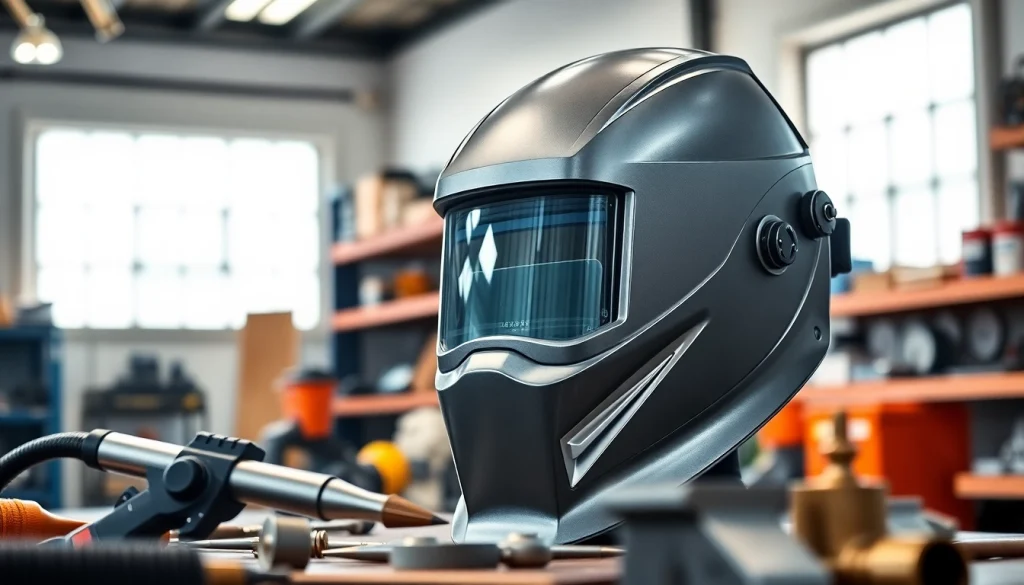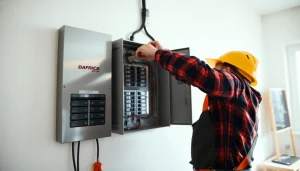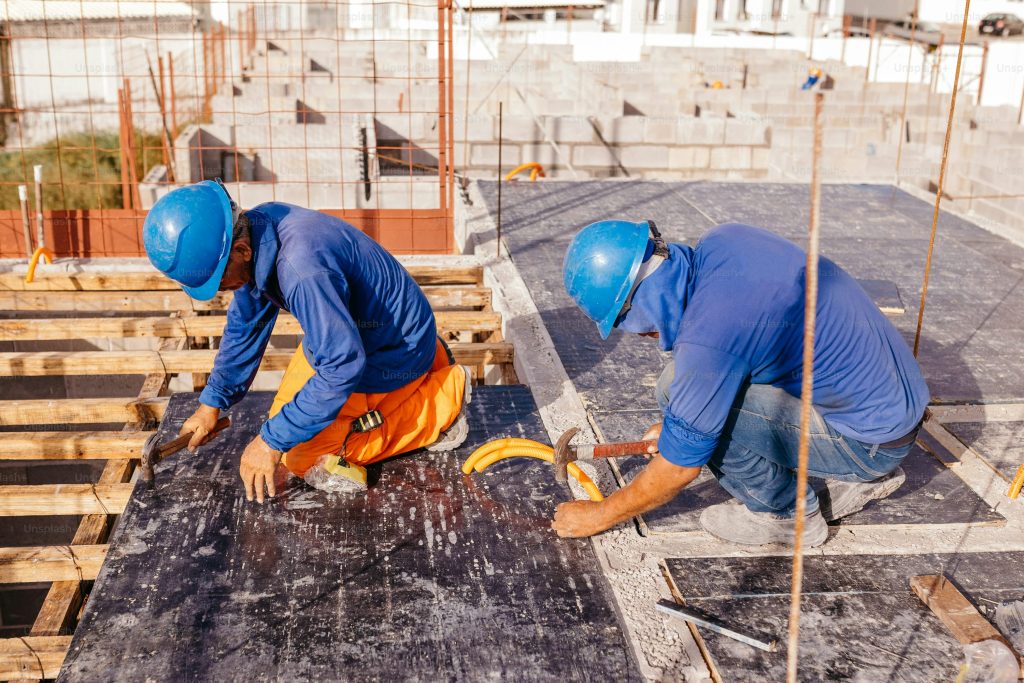Understanding Welding Masks
What is a welding mask?
A welding mask, commonly referred to as a welding helmet, is an essential piece of personal protective equipment (PPE) designed to shield the welder’s face, eyes, and neck from the dangers associated with welding operations. These hazards include intense light from the welding arc, ultraviolet (UV) and infrared (IR) radiation, sparks, and molten metal. Modern welding masks come with various features aimed at enhancing safety and comfort during the welding process.
Types of welding masks available
Welding masks can be categorized into several types based on their functionality and design. The primary types include:
- Auto-Darkening Welding Helmets: These helmets automatically adjust the lens shade based on the brightness of the welding arc, providing greater convenience and visibility during the welding process.
- Passive Welding Helmets: Featuring fixed shade lenses, passive helmets do not adjust to light changes. They are often lighter and less expensive but lack the convenience of auto-darkening features.
- Pancake Welding Hoods: These are flat, lightweight hoods that offer a wide field of vision and are popular for certain welding applications.
- Heavy-Duty Welding Masks: Built for industrial use, these masks are designed to withstand harsh environments and often come equipped with additional protective features.
The role of welding masks in safety
The role of welding masks in ensuring safety cannot be overstated. A welding mask acts as a barrier, preventing harmful exposure to ultraviolet and infrared rays that can cause serious eye damage. It also protects the skin from intense heat, sparks, and flying debris, which can lead to burns and other injuries. Without proper protection, welders are at risk of developing conditions such as photokeratitis, sometimes referred to as “arc eye,” which can cause temporary vision loss and discomfort. Thus, investing in a quality welding mask is critical for anyone involved in welding tasks.
Benefits of Using a Quality Welding Mask
Protection features of welding masks
Quality welding masks provide numerous protection features that enhance the safety of the welder. These features typically include:
- UV and IR Filtering: A high-quality mask effectively filters harmful UV and IR radiation, which can cause severe eye damage over time.
- Impact Resistance: Many welding helmets are constructed of durable materials to withstand impacts from falling debris, welding sparks, and other potential hazards.
- Comfortable Fit: Adjustability features, such as headgear and padding, provide a secure fit, minimizing distractions during the welding process.
- Anti-Fogging Coatings: Some masks come equipped with anti-fogging technology, which is particularly beneficial in humid environments or during extended use.
Comfort and usability considerations
Comfort is a crucial factor in selecting a welding mask, as prolonged use can lead to fatigue or discomfort. Features such as weight, ventilation, and adjustable straps play significant roles. Lightweight models reduce neck strain, while adequate ventilation prevents overheating. Additionally, ergonomic designs allow for a better range of motion, enabling the welder to work more efficiently.
Long-term cost benefits of quality masks
Investing in a high-quality welding mask can result in long-term cost benefits. While cheaper options may initially seem cost-effective, they often lack durability and advanced features that enhance safety and comfort. A quality helmet can last several years with proper maintenance, eventually saving the user money on replacements and reducing the risk of costly accidents due to inadequate protection.
How to Select the Right Welding Mask for Your Needs
Identifying your specific welding tasks
Before purchasing a welding mask, it’s crucial to identify the specific welding tasks you will be performing. Different types of welding, such as MIG, TIG, and Stick welding, may require different levels of protection and visibility. For instance, TIG welding often requires a helmet with a high-quality optical lens for better precision, while MIG welding may allow for a helmet that balances cost and features.
Evaluating lens types and specifications
The lens type is a critical consideration when selecting a welding mask. Auto-darkening lenses come with varying shades (commonly from shade 9 to shade 13) suitable for different welding applications. The higher the shade number, the darker the lens. Additionally, the reaction time of an auto-darkening lens can greatly affect usability; shorter reaction times ensure immediate protection as soon as the arc is struck.
Considerations for fit and comfort
When it comes to comfort and fit, adjustable headbands, weighing of the mask, and padding materials should be prioritized. A good welding mask should fit snugly against the head without causing pressure points. It’s wise to try on several options if possible, or ensure an easy return policy if ordering online, to find the best fit.
Maintaining Your Welding Mask
Regular cleaning tips for longevity
Maintaining your welding mask is essential for ensuring its longevity. Regular cleaning is pivotal to remove dirt, soot, and spatter that can impair visibility and functionality. A simple mix of mild soap and water can be utilized for cleaning the exterior, while the lens should be cleaned with a soft, lint-free cloth to avoid scratches. Always consult the manufacturer’s recommendations for best cleaning practices.
When to replace your welding mask
Replacement schedules may vary based on frequency of use and working conditions. Signs that suggest it’s time to replace your welding mask include physical damage (cracks or breaks), a worn-out lens that no longer provides adequate protection, or if the mask becomes uncomfortable after prolonged use. As a general guideline, if the helmet has been subject to severe impacts or any compromising situations, it’s best to invest in a new one.
Storing your welding mask properly
Proper storage of your welding mask can significantly extend its lifespan. Always store the helmet in a cool, dry place away from direct sunlight and extreme temperatures. Using a protective bag or case not only prevents scratches on lenses but also keeps the mask free from dust and contaminants. Proper storage is a small but critical factor in protecting your investment.
Industry Insights and Trends in Welding Masks
The latest innovations in welding masks
Innovation within the welding mask industry is continuously evolving. Recent advancements include the integration of digital displays that provide real-time information on welding parameters and battery health. Some masks offer enhanced connectivity features that allow users to sync data with mobile apps, providing feedback on welding performance and mask usage.
Market trends and popular brands
The market for welding masks has seen significant competition, leading to innovative designs and improved functionality. Popular brands such as Miller Electric, Lincoln Electric, and Jackson Safety consistently lead the market with high-quality options. Each brand often brings unique features to the table, such as superior lens technology, innovative materials, and ergonomic designs aimed at improving user experience and safety.
Future developments in welding safety gear
Looking ahead, the future of welding masks is aimed at integrating more smart technology, improving usability and safety. Features like augmented reality (AR) overlays could provide welders with critical information about their welds directly within their field of view. Additionally, we can expect an increase in personalized customization options that allow for tailored protection solutions catering to the specific needs of individual welders.








